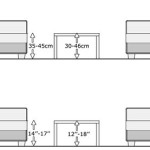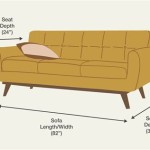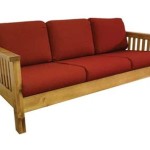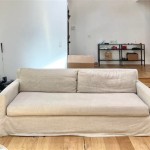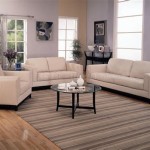Faux Leather Sofa: Pros and Cons
Faux leather, also known as synthetic leather or PU leather (polyurethane leather), offers a compelling alternative to genuine leather for sofa upholstery. Understanding the advantages and disadvantages of this material is crucial for making an informed purchasing decision.
Pros of Faux Leather Sofas
Faux leather presents several benefits that contribute to its popularity:
- Affordability: Faux leather is significantly less expensive than genuine leather, making it an attractive option for budget-conscious consumers.
- Low Maintenance: Unlike genuine leather, faux leather requires minimal upkeep. Simple wiping with a damp cloth is usually sufficient for cleaning.
- Durability: High-quality faux leather can be surprisingly durable, resisting scratches, scuffs, and cracking.
- Variety: Faux leather is available in a wide range of colors, textures, and finishes, offering extensive design flexibility.
- Animal-Friendly: As a synthetic material, faux leather is a cruelty-free choice for those concerned about animal welfare.
- Consistent Appearance: Faux leather offers a uniform appearance across the entire piece, unlike genuine leather which can have natural variations.
- Water Resistance: Faux leather is generally more resistant to water damage than genuine leather, making it suitable for households with children or pets.
Cons of Faux Leather Sofas
While faux leather offers several advantages, it also has some drawbacks:
- Less Breathable: Faux leather doesn't breathe as well as genuine leather, which can lead to a sticky or uncomfortable feeling in warm or humid environments.
- Susceptibility to Temperature Damage: Extreme temperatures can damage faux leather, causing it to crack or peel. Avoid placing faux leather furniture in direct sunlight or near heat sources.
- Lower Resale Value: Compared to genuine leather, faux leather furniture typically has a lower resale value.
- Not as Luxurious: While high-quality faux leather can mimic the look of genuine leather, it generally doesn't offer the same luxurious feel and suppleness.
- Potential for Peeling and Cracking: Lower-quality faux leather can be prone to peeling and cracking over time, especially with heavy use.
Cleaning and Maintaining Faux Leather Sofas
Proper care can significantly extend the lifespan of a faux leather sofa. Regular cleaning with a soft, damp cloth is generally sufficient. Avoid using harsh chemicals or abrasive cleaners, which can damage the material. Conditioning with a faux leather-specific product can help maintain its suppleness and prevent cracking.
Choosing the Right Faux Leather Sofa
Selecting the right faux leather sofa involves considering several factors:
- Quality: Look for high-quality faux leather that is thick, supple, and has a realistic grain pattern.
- Construction: A well-constructed sofa will have a sturdy frame and durable stitching.
- Style and Design: Choose a sofa that complements your existing decor and meets your aesthetic preferences.
- Comfort: Consider the sofa's cushioning and overall comfort level. Test it out in person if possible.
- Size and Scale: Ensure the sofa is appropriately sized for your living space.
Comparing Faux Leather to Other Upholstery Options
Faux leather offers a distinct set of characteristics compared to other popular upholstery materials:
- Versus Genuine Leather: While less expensive, faux leather lacks the natural breathability, durability, and luxurious feel of genuine leather.
- Versus Fabric: Faux leather is typically more resistant to stains and spills than fabric, but it may not be as comfortable in warm weather.
- Versus Microfiber: Both materials offer good stain resistance and durability, but microfiber is often softer and more breathable than faux leather.
Longevity and Durability of Faux Leather
The lifespan of a faux leather sofa varies depending on the quality of the material and the level of care it receives. High-quality faux leather can last for many years with proper maintenance, while lower-quality options may show signs of wear and tear sooner. Protecting the sofa from direct sunlight, extreme temperatures, and sharp objects can help extend its lifespan.
Environmental Considerations
While faux leather is a cruelty-free alternative to genuine leather, it's important to consider its environmental impact. The production of faux leather involves the use of synthetic materials derived from petroleum. However, advancements in manufacturing processes are leading to more sustainable options, such as bio-based faux leather made from renewable resources.

Leather Vs Fabric Sofas Which Is The Best Option For You

A New Sofa Leather Vs Fabric Pros And Cons Which Is Best Millers

Real Leather Vs Genuine Faux Vegan Upholstery Decoholic

Faux Leather What It Is And When To Use Or Avoid

Leather Vs Fabric Sofas Which Is The Best Option For You

Leather Vs Fabric Sofa Which Is The Better Choice

A New Sofa Leather Vs Fabric Pros And Cons Which Is Best Millers

47 Stylish Leather Sofas With Pros And Cons Digsdigs

Pros And Cons Of Faux Leather Fabric As A Newcomer

47 Stylish Leather Sofas With Pros And Cons Digsdigs
Related Posts

